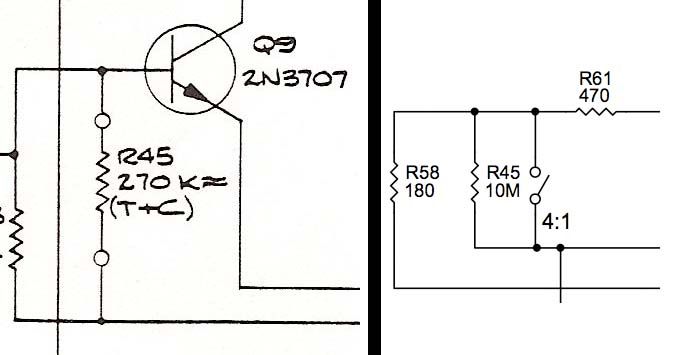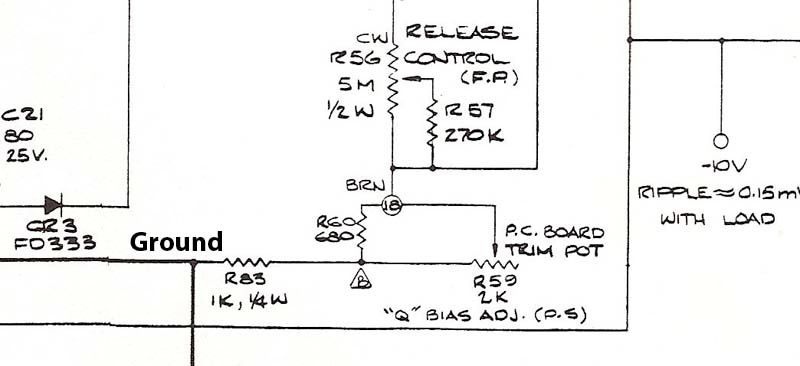I think you would want the GR off for setting the Qbias, which is pad 22 grounded. Pad 22 is the connection to C17, which is the sidechain input. Any signal passed to the sidechain is rectified into a dc voltage and added to the Qbias voltage, which you do not want when setting the bias.
Looking at the schematic, when you adjust Qbias, you are setting the bias ('normal') control voltage (cv) to the FET. If the trimmer is all the way left, the voltage is 0v. All the way right, it is something negative, maybe -3v. The more positive the cv, the more the FET will attenuate the signal (The FET is in a voltage divider with R5). So, when you set the Qbias, you are setting the cv up from negative until the FET just starts to attenuate your input signal.
Debugging... measure your voltages around the Qbias trimmer and see that the cv is changing as expected as you turn it. If it is turned all the way left on the schematic, the cv on the FET should be near ground and attenuating significantly...





